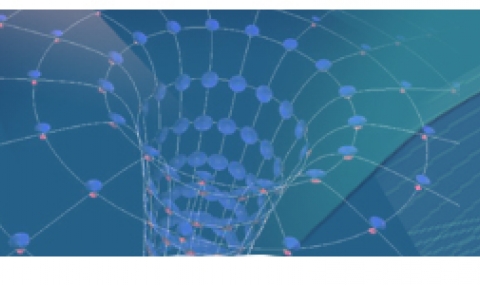Exams
You may want to take a look at exams from previous years:
Take into account that the material taught in previous years was slightly different (especially 2009,2007).
Tutorials
- Tutorial 13: 28.01.2013, Maximal Entropy principle – Problem 2.6 from Kardar
- Tutorial 12: 21.01.2013, Linear Response and Onsager Reciprocal Relations
- Tutorial 11: 14.01.2013, Brownian motion
Exercise 6, due 02.04.13 - Tutorial 10: 07.01.2013, Renormalization Group analysis of 2D Ising model
- Tutorial 9: 31.12.2012, Two dimensional Coulomb gas
Exercise 5, new version, which now includes only 3 questions - Tutorial 8: 24.12.2012, Mapping between Ising model and a lattice gas model
- Tutorial 7: 17.12.2012, Solution of the 2D Ising model
Exercise 4, due 31.12.2012
Reading material:- Landau & Lifshitz, Section 151
- Peliti, Statistical Mechanics in a Nutshell , Section 5.20
- Tutorial 6: 10.12.2012, Transfer matrices and soultion of the 1D Ising model
Reading material:- Pathria, Section 12
- Tutorial 5: 03.12.2012, Chemical reactions
Exercise 3, due 17.12.2012
Reading material:- Landau & Lifshitz, Sections 101-104
- Tutorial 4: 26.11.2012, Diamagnetism and De Haas van Alphen effect
Reading material:- Diamagnetism : Peierls, Surprises in Theoretical Physics, sect 4.3 and Landau & Lifshitz 59
- De Haas van Alphen effect: Calculation for T=0 from Huang Statistical Mechanics 11.4. Full calculation found in Landau & Lifshitz 60
- Tutorial 3: 19.11.2012, Inner degrees of freedom & BEC in harmonic trap
Exercise 2, updated on 25.11.2012 with some clarification of question 2, due 03.12.2012- The tutorial about diatomic molecules is taken from Grisha’s lecture notes, page 34.
- Tutorial 2: 12.11.2012, Monte Carlo simulation of Markov chains
- You may download the sample code, written in C++, from here . You can use it start writing your simulation of the Ising model. It can be compiled using visual studio installed on the computers found in the computer lab. To compile press F5. Before you do that, make sure you have the correct input variables set by right clicking the project -> Properties -> Configuration Properties -> Debugging -> Command Arguments. You may also run the program after compiling it outside the visual studio environment. You can use for that the *.bat files such as the “run.bat” sample file found in the ZIP file you’ve just downloaded. Good luck!
- Just to clarify how the Metropolis algorithm goes:
- Choose a site at random out of the L^2 sites.
- If E_j <= E_i , flip the spin.
- If E_j > E_i, generate a random number r between 0 and 1.
If r<exp(-\beta*(E_j-E_i)) flip the spin.
- Because W_ij scale as 1/L^2, a time step of 1 in reality corresponds to L^2 Metropolis steps. You should therefore rescale you time appropriately in your plots.
- In the homework you need to consider periodic boundary conditions (Ising model on a sphere).
- In question 3B you’re asked to compute \tau_{corr} and not \tau_{relax}.
- Regarding 3C, the point of the question is to practice how to check the scaling of your simulation results with L. Try to think why you get this specific scaling. You can understand it from thermodynamics or from the central limit theorem. For the latter you need to think of the system as squares of size \zeta*\zeta sites that fluctuate (almost) independently. \zeta here is the correlation length of the model which you will discuss in the coming lectures.
- Reading material:
- Landau and Binder, “A guide to Monte Carlo simulations in statistical physics”
- Newman and Barkema, “Monte Carlo methods in statistical physics”
- Krauth, “Statistical Mechanics: Algorithms and Computations”
- Krauth, “Introduction to Monte Carlo Algorithms”.
- You’ll find many examples in Gould and Tobochnick.
- If you plan do Monte Carlo for a living you might want to read “Simulations: the dark side”.
- Tutorial 1: 05.11.2012, Saddle point approximation and harmonic oscillator
Exercise 1, due 19.11.2012- Homework policy
- Here is a short exercise sheet for anyone who doesn’t feel comfortable with expanding functions into power series (this is for your benefit only, there is of course no need to submit it). You will be expected to know how to expand such series in the next homework exercises (as well as in your scientific career).


